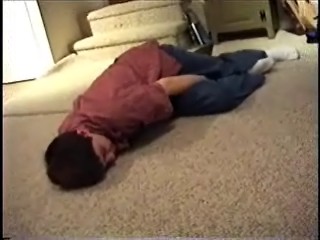Narcolepsy
Narcolepsy is a neurological condition characterized by severe fatigue, irresistible episodes of sleep and general sleep disorder. It is a kind of dyssomnia. more...
Symptoms of narcolepsy
The main characteristic of narcolepsy is overwhelming excessive daytime sleepiness (EDS), even after adequate nighttime sleep. A person with narcolepsy is likely to become drowsy or to fall asleep, often at inappropriate times and places. Daytime naps may occur with or without warning and may be irresistible. These naps can occur several times a day. Drowsiness may persist for prolonged periods of time. In addition, night-time sleep may be fragmented with frequent wakenings.
Three other classic symptoms of narcolepsy, which may not occur in all patients, are:
- Cataplexy: sudden episodes of loss of muscle function, ranging from slight weakness (such as limpness at the neck or knees, sagging facial muscles, or inability to speak clearly) to complete body collapse. Episodes may be triggered by sudden emotional reactions such as laughter, anger, surprise, or fear, and may last from a few seconds to several minutes. The person remains conscious throughout the episode.
- Sleep paralysis: temporary inability to talk or move when falling asleep or waking up. It may last a few seconds to minutes.
- Hypnagogic hallucinations: vivid, often frightening, dream-like experiences that occur while dozing, falling asleep and/or while awakening.
Daytime sleepiness, cataplexy, sleep paralysis, and hypnagogic hallucinations also occur in people who do not have narcolepsy, more frequently in people who are suffering from extreme lack of sleep.
In most cases, the first symptom of narcolepsy to appear is excessive and overwhelming daytime sleepiness. The other symptoms may begin alone or in combination months or years after the onset of the daytime naps. There are wide variations in the development, severity, and order of appearance of cataplexy, sleep paralysis, and hypnagogic hallucinations in individuals. Only about 20 to 25 percent of people with narcolepsy experience all four symptoms. The excessive daytime sleepiness generally persists throughout life, but sleep paralysis and hypnagogic hallucinations may not.
The symptoms of narcolepsy, especially the excessive daytime sleepiness and cataplexy, often become severe enough to cause serious disruptions in a person's social, personal, and professional lives and severely limit activities.
What happens in narcolepsy
Normally, when an individual is awake, brain waves show a regular rhythm. When a person first falls asleep, the brain waves become slower and less regular. This sleep state is called non-rapid eye movement (NREM) sleep. After about an hour and a half of NREM sleep, the brain waves begin to show a more active pattern again, even though the person is in deep sleep. This sleep state, called rapid eye movement (REM) sleep, is when dreaming occurs.
Read more at Wikipedia.org



